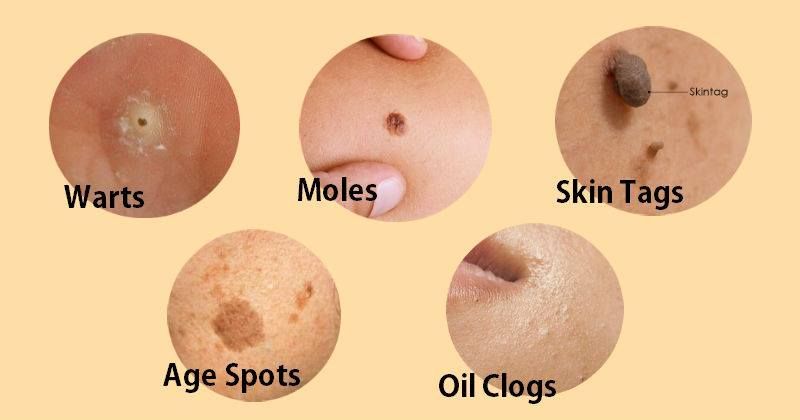Wart & Mole Removal In Thane
Wart and mole removal in Thane are common dermatological procedures aimed at eliminating benign skin growths. Using various methods such as freezing, surgical excision, or topical treatments, dermatologists address these growths. Warts, caused by a viral infection, appear as small, rough bumps, while moles are clusters of pigmented skin cells. Removal procedures are generally straightforward and may involve numbing the area before removal. It's essential to consult a dermatologist for evaluation and appropriate treatment based on the type, size, and location of the growth.
At Pristine Cosmesis, we specialize in safe and effective warts and moles removal in Thane. Our skilled team utilizes advanced techniques to ensure a comfortable experience and optimal results. With personalized care and attention to detail, we provide a precise and minimally invasive procedure, restoring your skin's natural beauty. Trust Pristine Cosmesis for expert wart and mole removal services.

Wart Removal Treatment in Thane
Wart removal treatments in Thane at Pristine Cosmesis vary based on the type of wart and its location. Here are a few common methods:
- Over-the-counter treatments: These include salicylic acid-based solutions or patches that gradually dissolve the wart over several weeks.
- Cryotherapy: This involves freezing the wart off using liquid nitrogen. It's often done at a doctor's office and may require multiple sessions.
- Electrosurgery: This procedure involves burning the wart using an electric current. It's typically done under local anesthesia.
- Surgical removal: Larger or stubborn warts may need to be surgically removed by a doctor. This might involve cutting the wart out and, in some cases, using stitches.
- Laser treatment: Laser therapy is used to destroy the blood vessels supplying the wart. It's generally done for larger or more stubborn warts.
Mole Removal Treatment in Thane
Mole removal treatment in Thane can vary based on the type of mole and individual preferences. Here are some common methods:
- Surgical Excision: The mole is cut out using a scalpel or surgical scissors. This method is often used for larger moles and allows for testing the mole tissue for any signs of malignancy.
- Laser Removal: Laser treatment involves using a concentrated beam of light to remove the mole. It's commonly used for smaller moles and may require multiple sessions for complete removal.
- Shave Excision: This involves using a small blade to shave off the mole. It's suitable for protruding moles and usually doesn't require stitches.
- Freezing (Cryotherapy): Liquid nitrogen is applied to the mole, causing it to freeze and eventually fall off. This method might require multiple sessions for complete removal.
- Home Remedies: Some opt for natural remedies like apple cider vinegar, garlic, or various creams to try to remove moles, although their effectiveness isn't medically proven.
Procedure of Skin Tag Removal Treatment in Thane
Here's an overview of the procedure for removing skin tags:
- Consultation: Visit a dermatologist or healthcare professional for an examination. They will assess the skin tag(s) to confirm they are benign and discuss the removal process.
- Methods of Removal:
- Cauterization: The skin tag is burned off using a special device that produces heat.
- Surgical Excision: The tag is cut off using sterile scissors or a scalpel after numbing the area with a local anesthetic.
- Preparation: Depending on the method chosen, the area may need to be cleaned and sanitized before the procedure.
- Procedure:
- Cauterization: The doctor will use a tool that emits heat to burn off the skin tag. A scab may form and fall off within a few days.
- Cryotherapy: Liquid nitrogen is applied to the skin tag, causing it to freeze. This often leads to the tag falling off within a week or two.
- Surgical Excision: The area around the skin tag is numbed, and then the tag is carefully cut off using sterile instruments. Stitches may be necessary for larger tags.
- Aftercare:
- Cauterization/Cryotherapy: Apply an antibiotic ointment and keep the area clean. A scab will likely form and heal within a week or two.
- Surgical Excision: Follow the doctor's instructions for caring for the wound. Stitches, if used, will be removed after a week or two.
- Healing: The skin may appear slightly red or irritated initially, but it should heal within a few weeks. Avoid picking at scabs to prevent infection and scarring.
Mole vs Wart
Moles:
- Moles are typically dark spots or raised areas on the skin, often brown or black in color.
- They are usually harmless, appearing due to clusters of pigment cells (melanocytes) in the skin.
- Moles can be present from birth or develop over time due to sun exposure or hormonal changes.
- While most moles are benign, some may require medical attention if they change in size, shape, or color.
Warts:
- Warts are small, rough growths that can appear anywhere on the skin, caused by the human papillomavirus (HPV).
- They can vary in appearance, from flat and smooth to raised with a rough texture, and they might have tiny black dots.
- Warts are contagious and can spread through direct contact with the virus, such as touching someone else's wart or a surface containing the virus.
- Treatment for warts may involve over-the-counter medications, prescription treatments, or procedures like freezing or burning.
